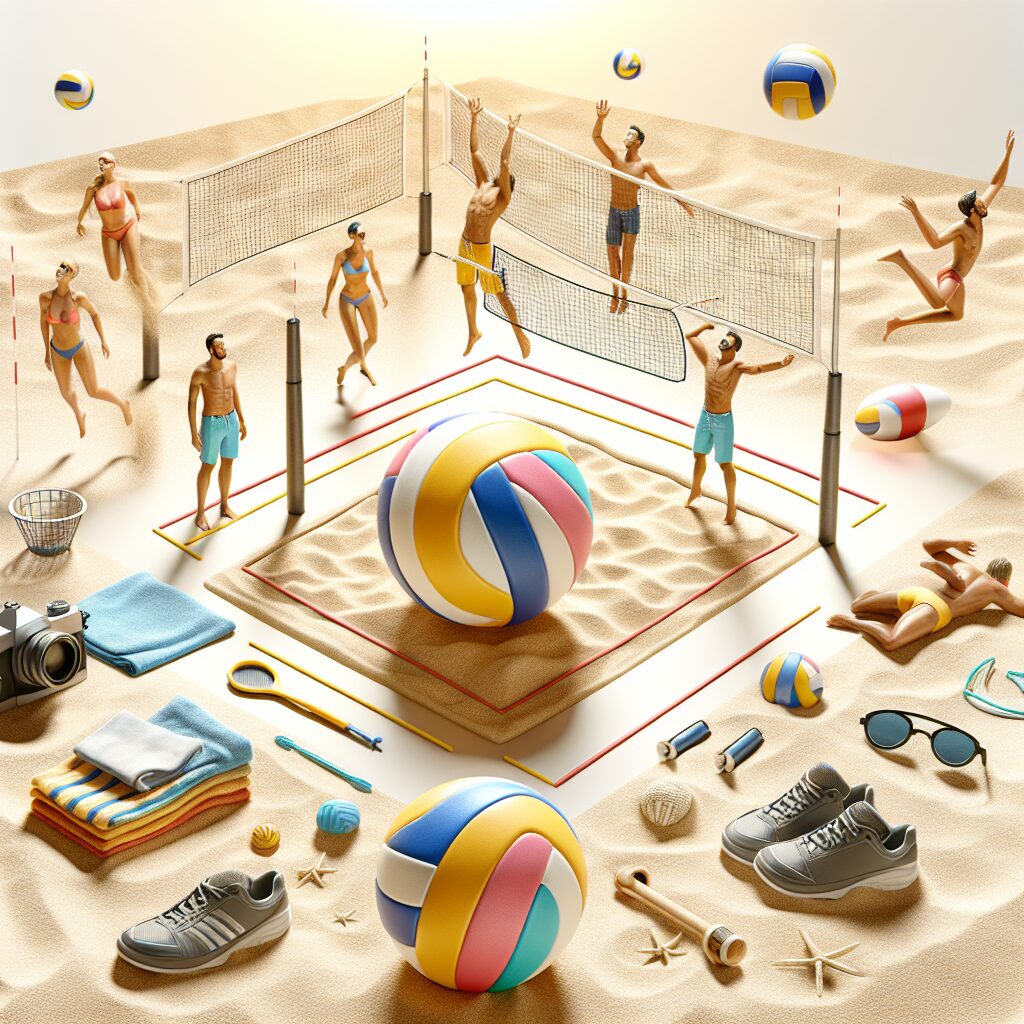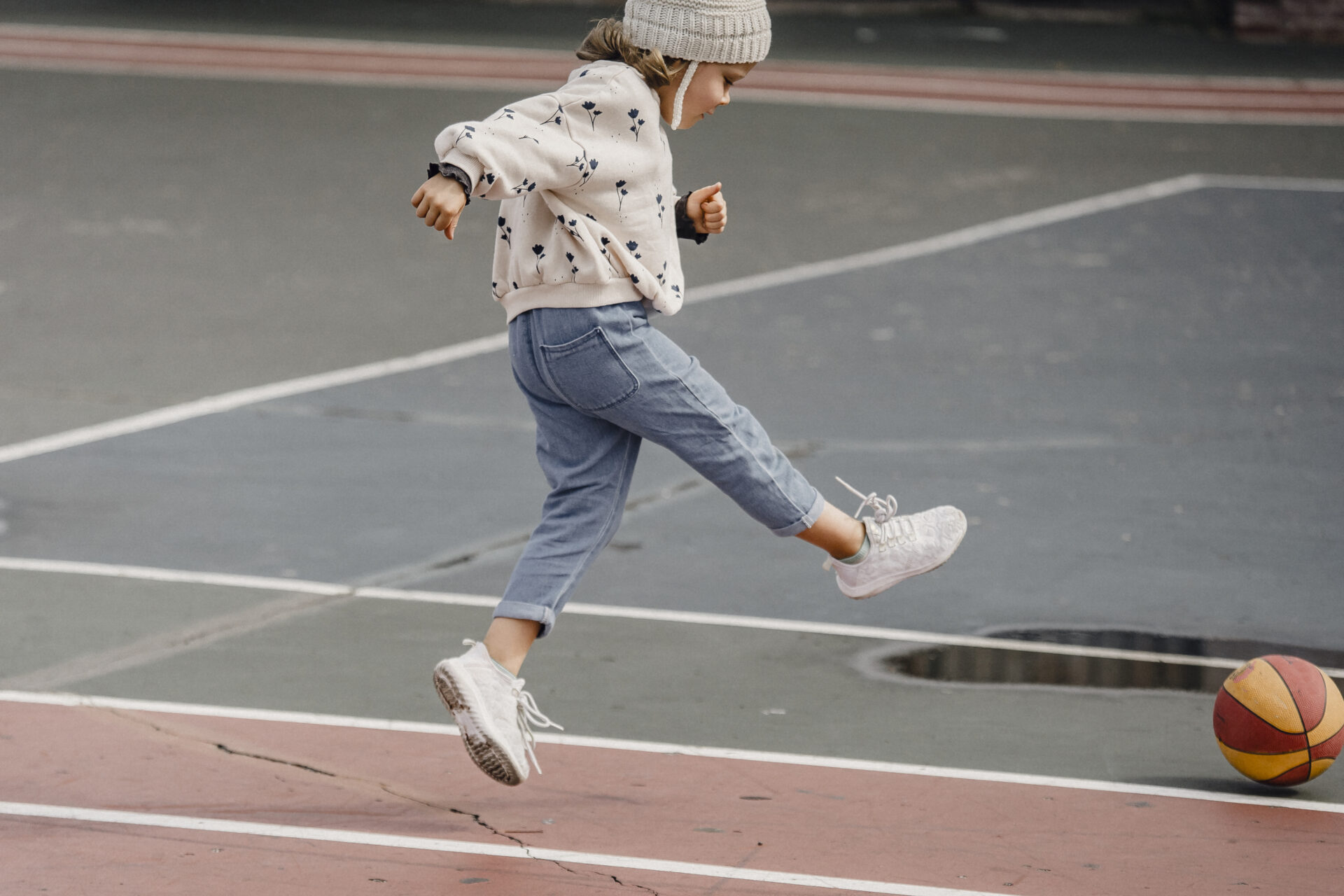Beach volleyball, also known as sand volleyball, is a popular sport played on sandy beaches around the world. With its origins dating back to the early 20th century, this exciting game has gained immense popularity due to its fast-paced nature and the beautiful backdrop of the beach. When it comes to enjoying a game of beach volleyball, the materials used play a crucial role in ensuring a fun and safe experience under the sun.
One key aspect of beach volleyball materials is the type of sand used for the playing surface. Unlike regular sand found on beaches, specialized sand is used in beach volleyball courts. This sand is finely graded and free from impurities, allowing players to move and dive without the risk of injury. Additionally, the sand’s texture and level of compaction greatly impact the game, as looser sand makes it harder to move quickly and can slow down the ball. Conversely, compacted sand allows for better traction and faster movements, enhancing the overall gameplay.
Moving on, another important material in beach volleyball is the ball itself. Beach volleyball balls differ from indoor volleyballs in terms of weight, size, and design. These balls are slightly larger and have a softer touch, making them easier to control and absorb the impact of powerful spikes. Due to the nature of outdoor play, beach volleyball balls are designed to withstand sun exposure, water, and sand without losing their shape or grip.
Now that we have explored the significance of beach volleyball materials, let’s delve into the key takeaways that will guide you in making the right choices for your own beach volleyball experience. From selecting the right sand for your court to choosing the appropriate volleyball gear, we will uncover essential tips and recommendations to enhance your enjoyment of this thrilling sport. So, grab your sunscreen and get ready for a deep dive into the world of beach volleyball materials.
Key Takeaways
1. The choice of materials for beach volleyball is crucial to ensure enjoyable and safe gameplay.
2. The beach volleyball itself should be made of high-quality synthetic leather or composite materials for durability and optimal performance.
3. The net should be made of sturdy materials like nylon or polypropylene, with appropriate dimensions and tension for fair gameplay.
4. Beach volleyball players should wear lightweight and breathable attire, including a comfortable swimsuit or tank top and shorts.
5. To enhance player safety, it is essential to use sunscreen for protection against harmful UV rays and to stay hydrated throughout the game.
What are the key beach volleyball materials for maximum fun in the sun?
1. Volleyball
The most essential material for beach volleyball is, of course, the volleyball itself. Look for a high-quality volleyball specifically designed for outdoor use. These volleyballs are typically made with a durable synthetic leather cover, allowing them to withstand the conditions of sand and sun. Find a ball that meets official size and weight standards to ensure a fair and enjoyable game.
2. Net and Poles
To set up a beach volleyball court, you will need a net and poles. Choose a durable net designed for beach play, as it needs to withstand wind, sun, and contact with the sand. Look for materials such as polyethylene or nylon that can endure outdoor elements. Sturdy poles that can be anchored securely into the sand are also crucial to keep the net in place during intense gameplay.
3. Anchoring System
Properly anchoring the net is necessary to maintain stability and prevent it from shifting or sagging during matches. Look for an anchoring system designed specifically for beach volleyball. This may include stakes or augers that can be easily driven into the sand, providing a secure and reliable foundation for the net.
4. Sand Court Boundary Lines
Setting clear boundaries for your beach volleyball court is essential to keep the game fair and prevent disputes. Use marked boundary lines, often made of durable and weather-resistant materials like polypropylene or nylon. These lines will ensure that the court dimensions remain consistent and provide players with a visible reference for in-bounds and out-of-bounds areas.
5. Sun Protection
Beach volleyball is typically played under the blazing sun, so don’t forget to include sun-protection materials in your beach volleyball kit. Wearing sunscreen with a high SPF, protective clothing, sunglasses, and a hat can help shield you from harmful UV rays. Additionally, an umbrella or portable shade structure will provide a shaded area for players to rest between matches, avoiding prolonged sun exposure.
6. Accessories
While not strictly necessary, there are several accessories that can enhance your beach volleyball experience. Consider bringing a portable beach volleyball cart to transport and store your equipment conveniently. A hand pump will allow you to inflate the ball if needed, while kneepads can provide added protection and comfort during intense rallies.
7. Proper Footwear
Playing volleyball on sand requires appropriate footwear to ensure stability and prevent injuries. Opt for beach volleyball shoes with good grip and ankle support. These shoes are designed to handle the unique challenges of playing on sandy surfaces and will help you move comfortably and confidently on the court.
8. Proper Hydration
Playing beach volleyball, especially under the scorching sun, can be physically demanding. Stay hydrated by bringing enough water or sports drinks to replenish fluids as you sweat. Proper hydration is crucial to maintain performance, prevent overheating, and stay energized throughout your matches.
9. Techniques and Strategies
To truly excel in beach volleyball, it’s important to learn and practice various techniques and strategies that can improve your gameplay. These may include serving techniques, setting and spiking skills, teamwork strategies, and defensive positioning. Seek out coaching or training resources to refine your skills and elevate your beach volleyball game.
10. Safety and Sportsmanship
Lastly, beach volleyball should always be played with a focus on safety and good sportsmanship. Be aware of your surroundings, avoid diving onto hard sand, and respect the physical boundaries of other players. Embrace the spirit of fair play, celebrate both your team’s successes and your opponents’, and prioritize everyone’s well-being throughout the game.
11. How can I maintain my beach volleyball materials?
To ensure the longevity and performance of your beach volleyball materials, follow these tips:
1. Rinse off your volleyball, net, and boundary lines with fresh water after each use to remove sand and any salt or debris.
2. Allow the equipment to dry thoroughly before storing to prevent mildew or mold growth.
3. Store the materials in a cool and dry place, away from direct sunlight, to prevent fading and degradation.
4. Regularly check and repair any damages or wear on the net, poles, and boundary lines to maintain their functionality and safety.
5. Replace worn-out equipment promptly to prevent any compromise in gameplay quality or player safety.
Frequently Asked Questions
What materials do I need for beach volleyball?
To enjoy beach volleyball, you’ll need a few essential materials. Firstly, you’ll need a volleyball, specifically one designed for use on sand, with a softer cover and larger surface area. Additionally, you’ll need a net that is sturdy enough to withstand the beach elements and can be securely anchored into the ground. Another important material is sunscreen to protect your skin from harmful UV rays.
Can I use any volleyball for beach volleyball?
No, it is highly recommended to use a volleyball specifically designed for beach play. Beach volleyballs have a softer exterior and larger surface area, which allows for more control and ease of play on sand. Regular indoor volleyballs may become damaged easily and are not optimized for beach conditions.
What type of net should I use for beach volleyball?
For beach volleyball, you should use a net that is specifically designed for outdoor use and can withstand the beach environment. Look for a net with durable materials, such as weather-resistant nylon, and sturdy construction to ensure it stays in place during gameplay.
Should I apply sunscreen before playing beach volleyball?
Yes, it is crucial to apply sunscreen before playing beach volleyball to protect your skin from harmful UV rays. Choose a broad-spectrum sunscreen with a high SPF and apply it generously to all exposed areas of your body. Reapply every two hours and after swimming or excessive sweating for optimal protection.
What other equipment can enhance my beach volleyball experience?
In addition to the basic materials like a volleyball and net, there are some optional equipment that can enhance your beach volleyball experience. Consider investing in a good pair of sunglasses to protect your eyes from the sun and reduce glare on the sand. You may also find it beneficial to have a beach towel for wiping off sweat or providing a clean surface to sit or lie on during breaks.
How can I maintain my beach volleyball materials?
To ensure the longevity of your beach volleyball materials, it’s important to take proper care of them. After each use, rinse off any sand or saltwater from the volleyball and net. Allow them to air dry, and store them in a cool, dry place to prevent damage. Regularly inspect your materials for any signs of wear and tear, and replace any worn-out or damaged parts as needed.
Is it necessary to have a dedicated beach volleyball net system?
While it is not mandatory to have a dedicated beach volleyball net system, it is highly recommended if you plan on playing beach volleyball frequently. A dedicated net system ensures proper height and tension, providing a more authentic playing experience. It also saves time and effort compared to setting up a makeshift net each time you want to play.
Can I play beach volleyball without a net?
While having a net is an integral part of traditional beach volleyball, you can still enjoy a game without one. Playing without a net is often referred to as “pepper” or “bump and set,” where players focus on passing, setting, and spiking the ball back and forth. It can be a fun way to practice your skills or play in a more casual setting.
Are there any special considerations for beach volleyball attire?
When it comes to beach volleyball attire, comfort and function are key. Opt for lightweight, breathable clothing that allows for ease of movement. Many players prefer to wear bathing suits or moisture-wicking athletic apparel. Don’t forget to wear comfortable and supportive footwear to protect your feet from the hot sand.
Can children play beach volleyball?
Absolutely! Beach volleyball can be enjoyed by people of all ages, including children. It’s a great way to encourage physical activity, develop coordination, and have fun outdoors. Ensure that children are supervised and take appropriate safety precautions, such as using age-appropriate equipment and applying sunscreen generously.
Final Thoughts
Beach volleyball materials play a crucial role in ensuring a fun and enjoyable experience under the sun. By investing in the right equipment, such as a proper beach volleyball and net, you can enhance your gameplay and make the most of your time at the beach. Additionally, don’t forget to protect your skin with sunscreen and wear comfortable attire. Whether you’re a casual player or a dedicated athlete, beach volleyball offers endless opportunities for fun, fitness, and friendly competition.
Remember, the key to a successful beach volleyball session lies in the materials you choose and how you care for them. Take the time to research and invest in high-quality materials that are designed for sand play, as they will significantly improve your overall experience. So grab your gear, gather your friends, and head to the beach for some sun-soaked volleyball action. Get ready to have a blast and enjoy the ultimate fun in the sun!




